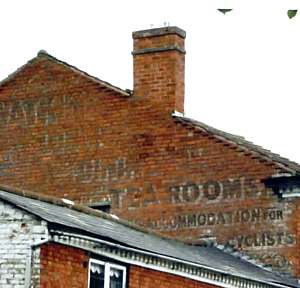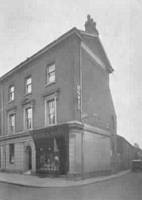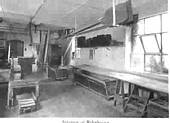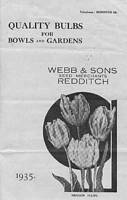|
|
The first part details bread rationing, the second the rationing of other foods. The shortage of labour had threatened
the gathering of the nation's harvest of 1945, but this had been
saved by allowing servicemen 28 days' "agricultural leave"
and by utilising 30,000 German and Italian prisoners of war.
In July 1946 the government introduced a new (and unnecessary)
plan to ration bread in a bid to conserve grain supplies. As
the allowance of 9 ounces a day was more than most people ate
anyway, it merely caused more frustration and paperwork. Bread
Unit Coupons allowed the ration to be taken as bread, flour,
cakes, buns or scones and there were seven different categories
of consumer ; agriculture workers and those in heavy manual jobs
were entitled to an increased ration, and there were special
arrangements for industrial canteens. The purpose of the scheme
was to make supplies last until the next harvest, but in the
event bread rationing lasted until July 1948. |
|
|
The harsh winter of 1947 - from the week-end of January 24th to the middle of March, temperatures plummeted and snow fell every day with the result that major roads became impassable and coal could not easily be moved to the power stations or to domestic suppliers (most families depended on coal fires for heating). Householders were told to switch off power from 9am - midday, and from 2-4 pm to conserve energy for industry, and anything made of wood which was not needed was burned as fuel. |
|
|
An example of equipment needed for a local bakery in 1947 - Webbs paid £1,600 for the goodwill and two delivery vans from a business in Oldbury; and £400 for machinery, plant and utensils to include :Bun divider, pie machine, small Hobart machine, cake machine and motor, moulder and motor, bread wrapper, dough machine and motor, Ferns Emulsifier, dough brakes, tack scales along with racks, boards, tins and sheets. |
|
Return to text |
Mr Watkins sold his family business to Webbs, and was re employed by them. His family had at one time also owned Watkins Tea Rooms on The Parade and, according to The Redditch Commercial Directory (1935), a second-floor café at number 13 Evesham Street. In present day Redditch, an advertisement can still just be made out on the side of a building in Alcester Street. Mr Watkins' family had acquired
The Mount Pleasant Bakery in 1915, and the owner described
himself as "an artistic confectioner". He reputedly
excelled at making wedding cakes and all his confectionery and
pastries were "artistically designed, pure and palatable,
and very enticing, even before tasting"! |
|
|
The "Travelling Oven", which was said to have cost £10,000 in the 1950s, was 45 feet in length. It took in the dough (after weighing, moulding and proving) at one end, and delivered the loaves at the other end at the rate of about 1,000 per hour. |
|
|
The Redditch Commercial Directory for 1935 describes production methods at Webbs bakery :The flour is shot down from an upper storey through a sieve. It then passes to a mixing machine where the necessary amount of water, yeast and other ingredients are added, and, in a short time, is dropped out, thoroughly kneaded and mixed, into troughs, which are covered over and left to rise. It is then fed into an automatic machine which cuts it up into accurately weighed lumps, which drop onto a travelling belt. It then passes through moulding and shaping machines, and then into tins, or formed into ordinary cottage loaves. The loaves are run onto provers and into the ovens. |
|
Return to text |
Wilfred was a popular manager of the bakehouse, and was sorely missed by the staff. In his will Wilfred left money to his brothers, to each of the women in the family, and to his nephews and nieces. There were also bequests to several of his key workers, Foley Field, Fred Cale, Horace Austin and Luke Giles, for his housekeeper, and for the upkeep of St Stephen's church. |
|
|
Making use of the rooms at 20 Church Green East in the 1960s / 70s : at first the room to the left of the front door was Ted's office, while across the hall was the shop with its large stove on the far wall. The entrance to the shop from the street was through the distinctive glass fronted door with the latch that clicked on opening, and the bell to alert the staff. Later, John and Gordon had their office on the first floor, in the room where for years Catharine had watched Redditch carnival procession every September. The room opposite, which had been her bedroom, became the cash office, where the delivery men brought in the takings from their rounds. Some years later the downstairs office became the biscuit room, while next to it, down the passage, was the flour room. |
|
|
The National Telephone Company
was taken over by the Post Office in 1912, and at this time Redditch
district was served by a small magneto switchboard
which had two operating positions and could cater for about 100
subscribers. In 1917 this was increased to a five position switchboard
serving up to 300 subscribers. When this too became inadequate
for the needs of the town it was replaced by a central battery
type switchboard which could cater for 800 lines. |
|
|
Webbs Seed Trade |


 20 Church Green
East and the bakehouse in 1933
20 Church Green
East and the bakehouse in 1933 bulb
catalogue 1935
bulb
catalogue 1935